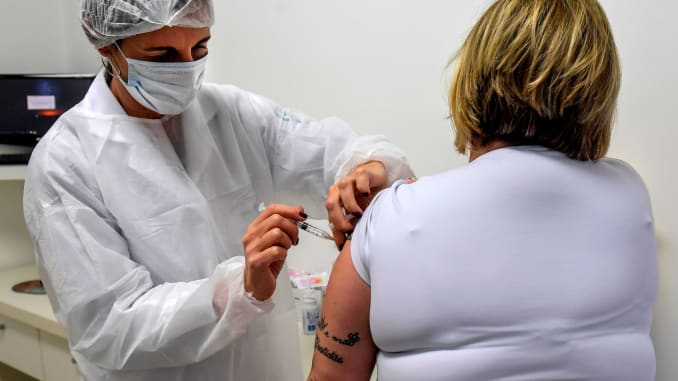AstraZeneca’s Oxford Covid-19 vaccine has successfully provoked a strong immune response in human cells, according to a detailed analysis carried out by independent UK scientists.
The findings, led by scientists at the University of Bristol and published on the pre-print server ResearchSquare, represent the most in-depth analysis of any of the COVID-19 vaccine candidates, going significantly above and beyond any regulatory requirements anywhere in the world.
Dr David Matthews, Reader in Virology from Bristol’s School of Cellular and Molecular Medicine (CMM), who led the research, said: “This is an important study as we are able to confirm that the genetic instructions underpinning this vaccine, which is being developed as fast as safely possible, are correctly followed when they get into a human cell.
“Until now, the technology hasn’t been able to provide answers with such clarity, but we now know the vaccine is doing everything we expected and that is only good news in our fight against the illness.”
The Oxford vaccine is made by taking a common cold virus (adenovirus) from chimpanzees and deleting about 20 per cent of the virus’s instructions. This means it is impossible for the vaccine to replicate or cause disease in humans, but it can still be produced in the laboratory under special conditions. By removing these genetic instructions there is space to add the instructions for the spike protein from SARS-CoV-2. Once inside a human cell the genetic instructions for the spike protein need to be ’photocopied’ many times – a process known as transcription. In any vaccine system, it is these ’photocopies’ that are directly used to make large amounts of the spike protein.
Once the spike protein is made, the immune system will react to it and this pre-trains the immune system to identify a real COVID-19 infection. So, when the person vaccinated is confronted with the SARS-CoV-2 virus their immune system is pre-trained and ready to attack it.
Adenoviruses have been used for many years to make vaccines, and these are always tested to very high standards to make sure every batch of vaccine has the correct copy of genetic instructions embedded in the vaccine. However, thanks to very recent advances in genetic sequencing and protein analysis technology, researchers at Bristol were for the first time also able to directly check thousands and thousands of the ‘photocopied’ instructions produced by the Oxford vaccine within a cell. In this way they were able to directly validate that the instructions are copied correctly and accurately, providing greater assurance that the vaccine is performing exactly as programmed. At the same time, the researchers checked the spike protein being made by the vaccine inside human cells also accurately reflects the instructions as programmed. This brand-new approach may be more routinely used in the future to help researchers fine tune the performance of these kinds of vaccines.







